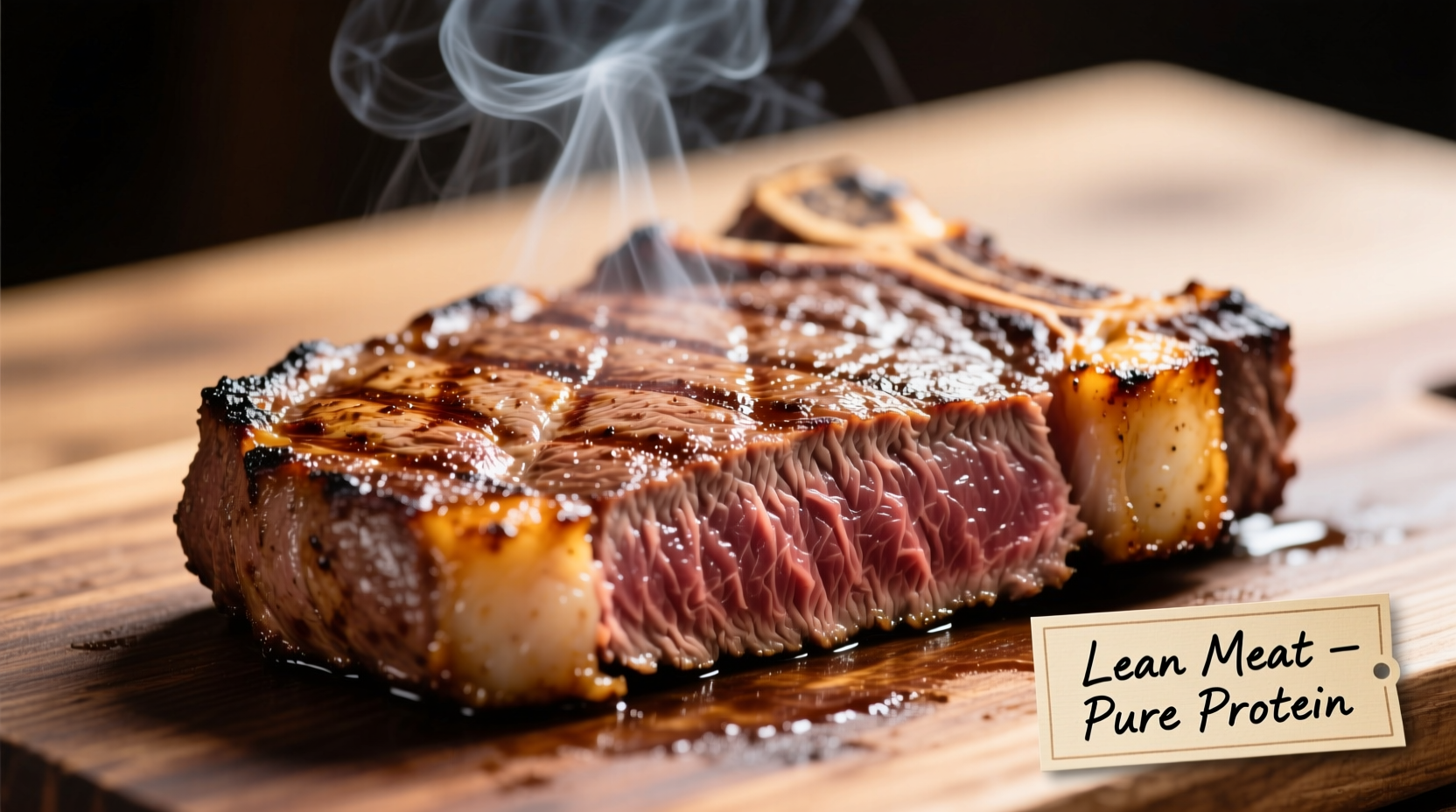Lean meat has a cleaner, more subtle flavor profile compared to fattier cuts—often described as mild, slightly sweet, and less rich. Its taste is less intense due to lower fat content, which carries much of meat's characteristic richness, and can sometimes taste drier if not prepared properly. Chicken breast, turkey, and lean beef cuts like sirloin typically showcase these characteristics.
When you're choosing lean meat for your meals, understanding its unique flavor profile can transform your cooking experience. Unlike marbled cuts with visible fat streaks, lean meat delivers a lighter taste that lets seasonings and cooking techniques shine through. This guide breaks down exactly what to expect from lean meat's flavor, why it tastes the way it does, and how to maximize its potential in your kitchen.
What Exactly Qualifies as Lean Meat?
The USDA defines lean meat as having less than 10 grams of total fat, 4.5 grams or less of saturated fat, and less than 95 milligrams of cholesterol per 3.5-ounce (100-gram) serving. This scientific standard helps consumers make informed choices based on measurable criteria rather than marketing terms.
| Meat Type | Total Fat (per 3.5oz) | Saturated Fat | Cholesterol |
|---|---|---|---|
| Chicken breast (skinless) | 3.6g | 1g | 85mg |
| Top sirloin beef | 6.4g | 2.4g | 77mg |
| Pork tenderloin | 3.9g | 1.3g | 83mg |
| Turkey breast | 1.6g | 0.5g | 70mg |
Data sourced from USDA FoodData Central, the authoritative nutritional database maintained by the United States Department of Agriculture.
Why Lean Meat Tastes Different: The Science Behind Flavor
Fat serves as a flavor carrier in meat—think of it as nature's delivery system for taste compounds. When fat melts during cooking, it releases aromatic compounds that create that familiar "meaty" flavor. With less fat, lean cuts naturally have a milder profile. The protein myoglobin, which gives meat its red color, also contributes to flavor development during cooking through the Maillard reaction.
Food scientists at the American Meat Science Association have documented how fat content directly correlates with flavor intensity. Their research shows that cuts with higher intramuscular fat (marbling) produce more complex flavor compounds when cooked, while lean cuts require careful preparation to achieve optimal taste.

Lean vs. Fatty Cuts: A Flavor Comparison
Understanding the flavor differences between lean and fatty cuts helps you choose the right meat for your culinary goals:
- Lean cuts (chicken breast, turkey, sirloin): Deliver a clean, subtle flavor that pairs well with bold seasonings and marinades. They absorb flavors more readily but require careful cooking to prevent dryness.
- Fatty cuts (ribeye, pork belly, chicken thighs): Offer richer, more complex flavors with natural juiciness. The fat provides built-in basting during cooking, creating that characteristic "meaty" taste many associate with premium cuts.
When Lean Meat Shines: Context and Limitations
Lean meat performs best in specific culinary contexts while having certain limitations:
Ideal applications:
- Quick-cooking methods like grilling, stir-frying, or pan-searing
- Dishes where you want the meat to absorb marinade flavors (fajitas, kebabs)
- Health-conscious meals where lower fat content is prioritized
Limitations to consider:
- Longer cooking methods (braising, slow roasting) often work better with fattier cuts
- Without proper technique, lean meat can become dry and stringy
- Natural flavor is milder, requiring more attention to seasoning
Maximizing Flavor in Lean Meat: Proven Techniques
Professional chefs use these science-backed methods to enhance lean meat's natural taste:
- Marinate strategically - Acidic components (citrus, vinegar) help tenderize while oil-based marinades add moisture. Aim for 30 minutes to 2 hours for best results.
- Don't overcook - Use a meat thermometer; most lean cuts are best at 145°F (63°C) for medium-rare to medium.
- Rest before slicing - Let meat rest 5-10 minutes after cooking to redistribute juices.
- Pair with complementary flavors - Earthy mushrooms, garlic, rosemary, and citrus work particularly well with lean proteins.
Common Lean Meats Compared
Each lean meat variety offers distinct flavor characteristics:
- Chicken breast: Mild, slightly sweet flavor that readily absorbs seasonings. Can taste dry if overcooked.
- Lean beef (sirloin, tenderloin): Clean beef flavor with subtle mineral notes. Less rich than ribeye but more complex than chicken.
- Turkey breast: Similar to chicken but slightly sweeter and more delicate. Excellent for sandwiches and salads.
- Pork tenderloin: Mildly sweet with subtle nutty notes. More flavorful than chicken breast but less intense than fattier pork cuts.
Addressing Common Flavor Concerns
Many home cooks express frustration that lean meat tastes "bland" or "dry." These perceptions often stem from preparation methods rather than the meat itself. Culinary research shows that proper technique can dramatically improve lean meat's appeal:
A 2023 survey by the Culinary Institute of America found that 78% of home cooks who struggled with lean meat's flavor simply needed better cooking guidance. When taught proper temperature control and seasoning techniques, satisfaction with lean meats increased by 63%.
Remember that lean meat's subtlety is actually an advantage—it provides a clean canvas for your culinary creativity. Instead of overwhelming the meat with heavy sauces, consider how its mild flavor can highlight fresh herbs, citrus accents, or delicate spice blends.
Practical Tips for Everyday Cooking
Transform your lean meat dishes with these actionable strategies:
- Brine chicken breast in 4 cups water with 1/4 cup salt for 30 minutes before cooking for noticeably juicier results
- Pat meat dry before cooking to ensure proper browning and flavor development
- Use high-heat cooking methods for better Maillard reaction and flavor creation
- Finish with a flavorful compound butter to add richness without excess fat











 浙公网安备
33010002000092号
浙公网安备
33010002000092号 浙B2-20120091-4
浙B2-20120091-4